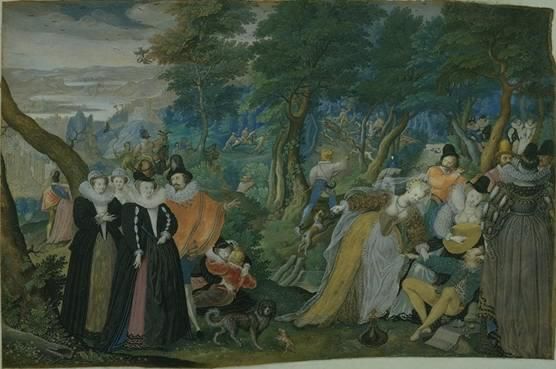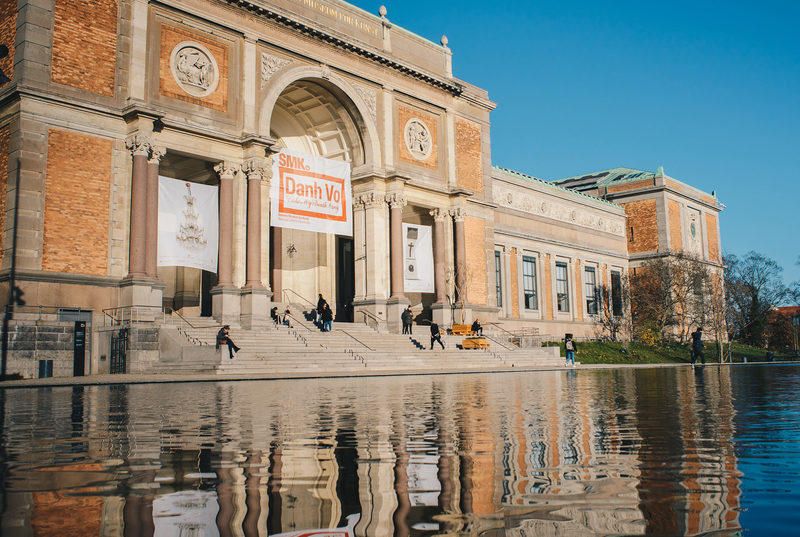
A Party in the Open Air. Allegory on Conjugal Love
This miniature painting shows a scene teeming with detail in which men and women have gathered for an open-air party where the concept of love is at the heart of everything. Oliver was associated with the English court in the late 17th century and was among the pre-eminent miniature painters of the time.
Oliver’s small miniature painting unfolds a scene full of detail. In a landscape setting with trees and cliffs in the background groups of men and women have gathered for an open-air party. A woman playing the lute and a man playing the flute provide musical accompaniment, and in the background some are engaged in a hunt for wild boar and other animals. In the foreground are two groups that represent polar opposites. To the right are men and women wearing colourful costumes embroidered in gold thread; the women’s bosoms are bared. To the left the women are demurely dressed in black. Between the two groups a couple meets in a heated embrace on the bare ground.
The juxtaposition of these two clearly defined, separate groups of figures foregrounds how this scene is a moralising allegory, i.e. a cautionary tale about Christian, married love versus sensuous love, which at the time was regarded as corrupting and wrong. Youth, wealth, and beauty are as fleeting as the dulcet tones of the musical instruments, and in the far distance to the left the gallows remind us that we must all die and should choose the proper and virtuous route through life.
Isaac Oliver was one of the finest miniature painters in England under Elizabeth I (1558-1603) and Jacob I (1603-25). In all likelihood he was taught the art of miniature painting by Nicholas Hillard, one of the main practitioners of the genre. Oliver mainly did miniature portraits but would also create allegories such as this, employing a special technique and partly transparent colours to depict a motley, teeming collection of figures.
1590-1595
Gouache and water colour on vellum stuck onto card
11.3 x 17.4 cm
KMS6938
Images and text © National Gallery of Denmark, 2018
Where you'll find this

SMK – National Gallery of Denmark
Permanent collection




